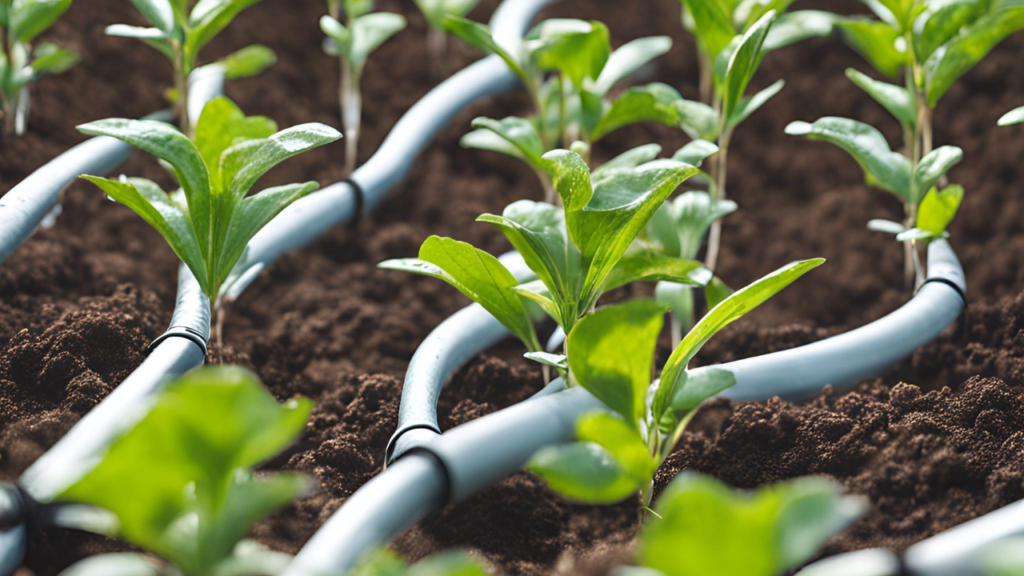Introduction
Hello, fellow garden enthusiasts! If you’re dabbling in the world of urban or small-space gardening, you’ve come across the concept of cinder block gardening. It’s a fantastic way to maximize limited spaces while keeping things tidy and organized. But as any seasoned gardener will tell you, the secret sauce to any thriving garden is how well you manage the watering. Today, we’re diving deep into the best practices for watering your cinder block vegetable garden, ensuring your veggies are as healthy and bountiful as possible.
Understanding the Basics of Cinder Block Gardening
What is Cinder Block Gardening?
Cinder block gardening involves using concrete blocks as the framework for your planting beds. These blocks are durable, affordable, and surprisingly versatile. You can stack them in various configurations to create raised beds, which are excellent for controlling soil quality and improving drainage.
Why Choose Cinder Blocks?
One of my early gardening challenges was dealing with poor soil and limited space. That’s when I turned to cinder blocks. Not only did they neatly solve my space issue, but their porous nature helped with soil aeration, a crucial factor for root health.
Preparing Your Cinder Block Garden for Optimal Watering
Setting up your garden correctly from the start can make a huge difference in the amount of water your plants need.
Choosing the Right Soil Mix

To start, ensure your soil mix is up to the task. My go-to for ensuring good moisture retention and drainage is a mix of one part compost, one part topsoil, and one part perlite. Remember, water management starts with good soil!
Arranging Your Blocks
Arrange your cinder blocks to take advantage of natural rainfall and minimize evaporation. An east-west orientation generally works well, as it maximizes sunlight while protecting from some of the midday heat, which can dry out your plants too quickly.
Choosing the Right Watering Tools and Techniques
Picking the Perfect Watering Tools
Over the years, I’ve experimented with various tools, and here’s the lowdown:
- Watering cans: Great for small gardens or specific plants that need careful watering.
- Garden hoses with a spray attachment: Ideal for larger areas, letting you control the water flow and reach.
- Drip irrigation systems are the gold stars of garden watering. They deliver water directly to the roots at a controlled pace, which is perfect for the consistent moisture needs of cinder block gardens.
Setting Up Drip Irrigation

Installing a drip irrigation system was a game-changer for me. It might seem daunting at first, but it’s quite straightforward. Lay out the main hose along the back of your garden beds, connect drip lines into each block, and set a timer. You’ll save time and water, and your plants will thrive with the consistent moisture.
Best Practices for Watering Your Cinder Block Vegetable Garden
Watering Schedules for Different Vegetables
Each vegetable in your garden has unique needs:
- Leafy greens like lettuce or spinach thrive on consistent, even moisture.
- Root vegetables such as carrots or beets require deep watering less frequently.
- Fruiting plants like tomatoes or peppers need more water as they grow but less once they start fruiting.
Recognizing Watering Issues
Over-watering can be just as harmful as under-watering. Signs of over-watering include yellowing leaves and a lack of fruit or flower development. Under-watered plants will look wilted and dry. Adjust your watering based on these signs and the feel of the soil. If it sticks to your finger, it’s probably moist enough.

Advanced Tips for Water Management for Cinder Block Gardening
Mulching and Covering
Applying a layer of organic mulch around your plants can drastically reduce water evaporation and keep the soil moist longer. I learned this the hard way when I noticed my soil drying out too quickly during a particularly hot summer. A simple layer of straw mulch made an incredible difference.
Using Technology to Your Advantage
Water meters and moisture sensors can take the guesswork out of watering. I use a basic moisture sensor to monitor my garden’s moisture levels, ensuring I never over or under-water again.
Troubleshooting Common Watering Issues
Solving Common Problems
Algae growth on the blocks, salt accumulation in the soil, and uneven moisture distribution are common issues. To combat these, ensure good air circulation, flush the soil periodically to remove salts, and check your irrigation setup for uniform water distribution.
Mastering the art of watering isn’t just about keeping your plants alive; it’s about helping them flourish. As you get more comfortable with these techniques, don’t be afraid to tweak and adjust based on your garden’s needs and local climate conditions.

